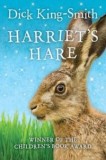
The Horn Book website has lots of material of interest to teachers. Here are some areas to explore. And follow us on Twitter: #lollysclass
|
Interviews with authors and illustrators Recommended books -- reviews and themed book lists |
School -- reading in school, author visits, and more Suggestion box: what else to you want to see in Lolly's Classroom? |
"Rabid Rabbit Readers" ---- try saying that five times fast
I’ve often heard the expression “teaching is a marathon, not a sprint,” an indication that teachers must allow time to pace themselves throughout the school year.
First-year teachers are often thrown into a developed, engrained curriculum plan for a school’s reading program and — just like that — are expected to know how to teach it the best way possible with the fewest questions asked.
Upon learning that the first reading unit at my new school would focus on texts with rabbits as the central characters, I came to a screeching halt. Frankly, the rabbit choice just seemed incredibly random. Yet, as is often my nature, I hopped right into the unit and gained some lasting insights along the way.
First, most young children absolutely adore animals. There’s something about having a furry friend by your side that immediately puts children at ease, and rabbits are no exception to this rule. Rabbits are rarely viewed in a negative light, but rather seen as furry creatures with pink ears and a pouffy backside. They can also convey a sense of magic and wonder: the notion of pulling a rabbit out of a hat; the beloved Easter bunny hiding treasures; or Bugs Bunny munching on his carrot, saying “What’s up, Doc?”
I also believe that there is immense value in an entire grade level getting to explore the same theme or character while reading texts appropriate to their instructional reading levels. At my school, we’ve divided our students into four reading groups based on a variety of factors, from guided reading levels to instructional strengths and weaknesses. Fortunately, there is a lot of great reading material available on rabbits, and our students felt comfortable exchanging comments and reviews of what they were reading without having to worry about what level their group was reading in comparison to the others.
The fact that they were able to share a common link through a rabbit character allowed for some great discussion about personality similarities and differences, as well as fostering in-depth book talks amongst peers. We culminated our unit with a “Rabbit Day” celebration when every student wore rabbit ears, chomped on carrot cake, participated in a hopping relay race, and performed skits that introduced the themes of their respective stories.
Here are the books that the third grade students at my school loved. I would encourage other teachers to look into them as well.




Harriet’s Hare by Dick King-Smith is an engaging story about a young girl living on a farm in England whose life changes when a talking hare arrives from a far away planet.
Bunnicula by Deborah and James Howe follows the exciting adventures of a vampire rabbit who sucks the juice out of vegetables!
The Velveteen Rabbit by Margery Williams is a classic tale based on a stuffed animal who becomes a real rabbit under the love of his young owner.
The Country Bunny and the Little Golden Shoes by Du Bose Heyward is a lovely story about a mother rabbit with lofty aspirations to become the revered Easter Bunny.
Good luck to all you rabid rabbit readers!
RELATED
RECOMMENDED
ALREADY A SUBSCRIBER? LOG IN
We are currently offering this content for free. Sign up now to activate your personal profile, where you can save articles for future viewing.






Add Comment :-
Comment Policy:
Comment should not be empty !!!
Meg
My favorite bunny book is Shadrach by Meindert DeJong. The author really captures the intensity of a child's relationship with an animal. It would make a great read-aloud.Posted : Apr 12, 2019 10:07